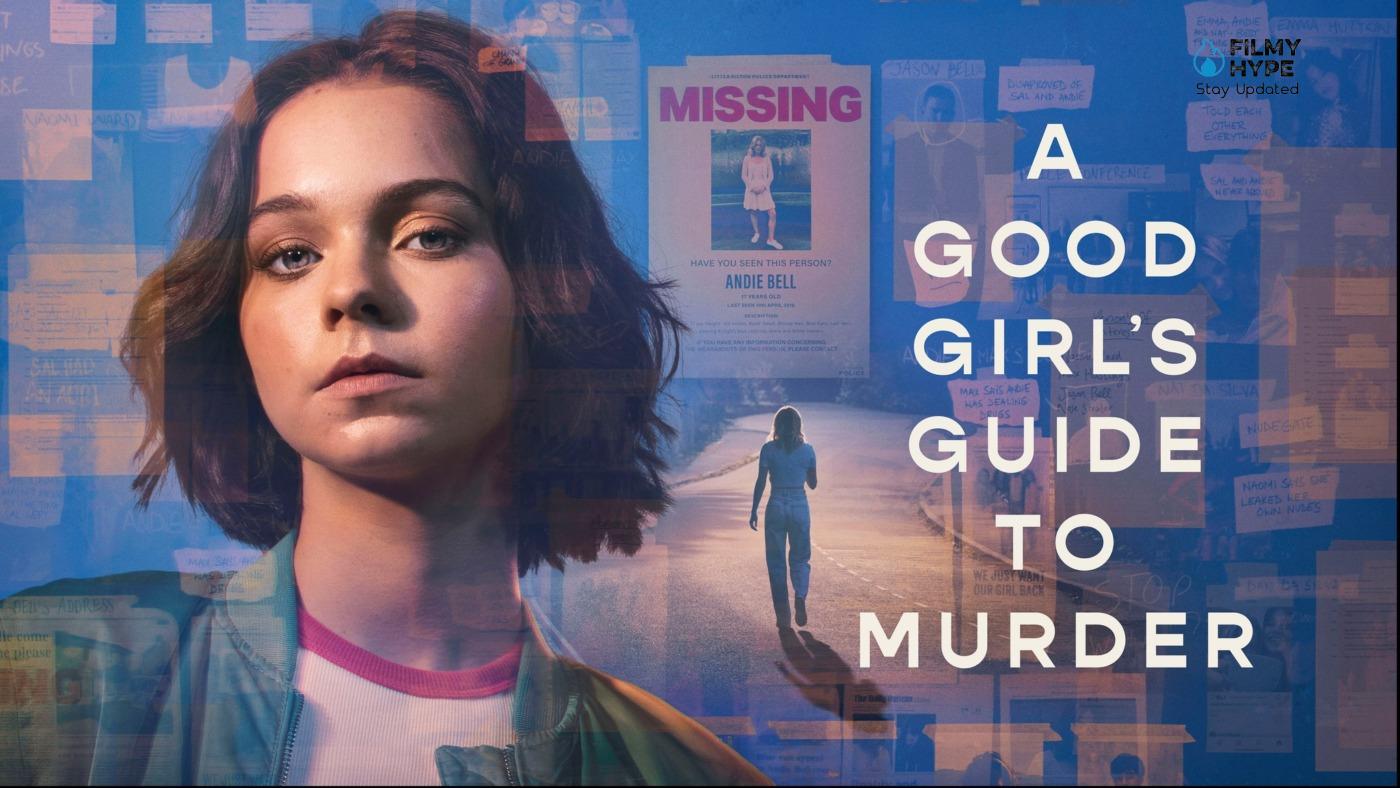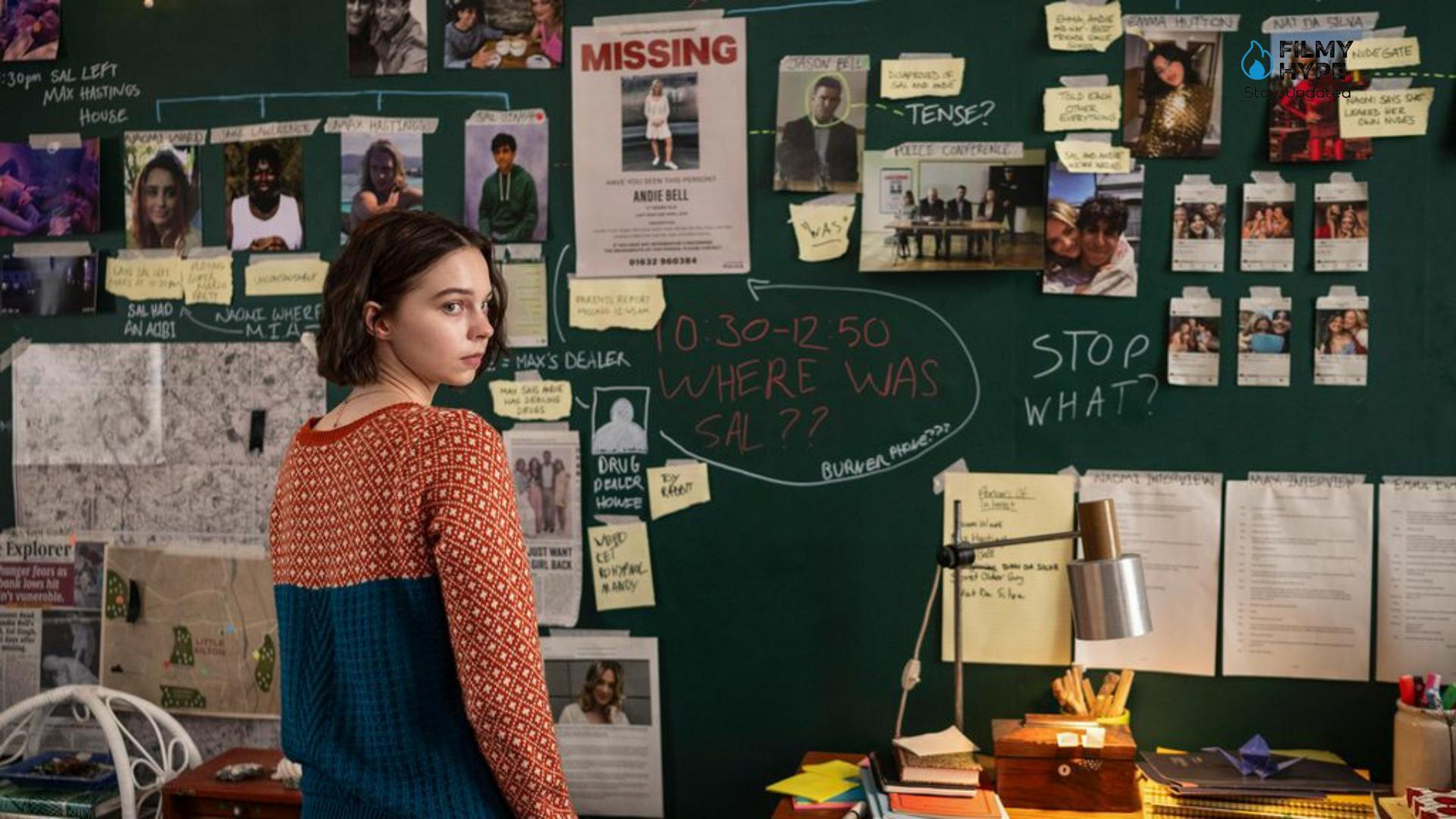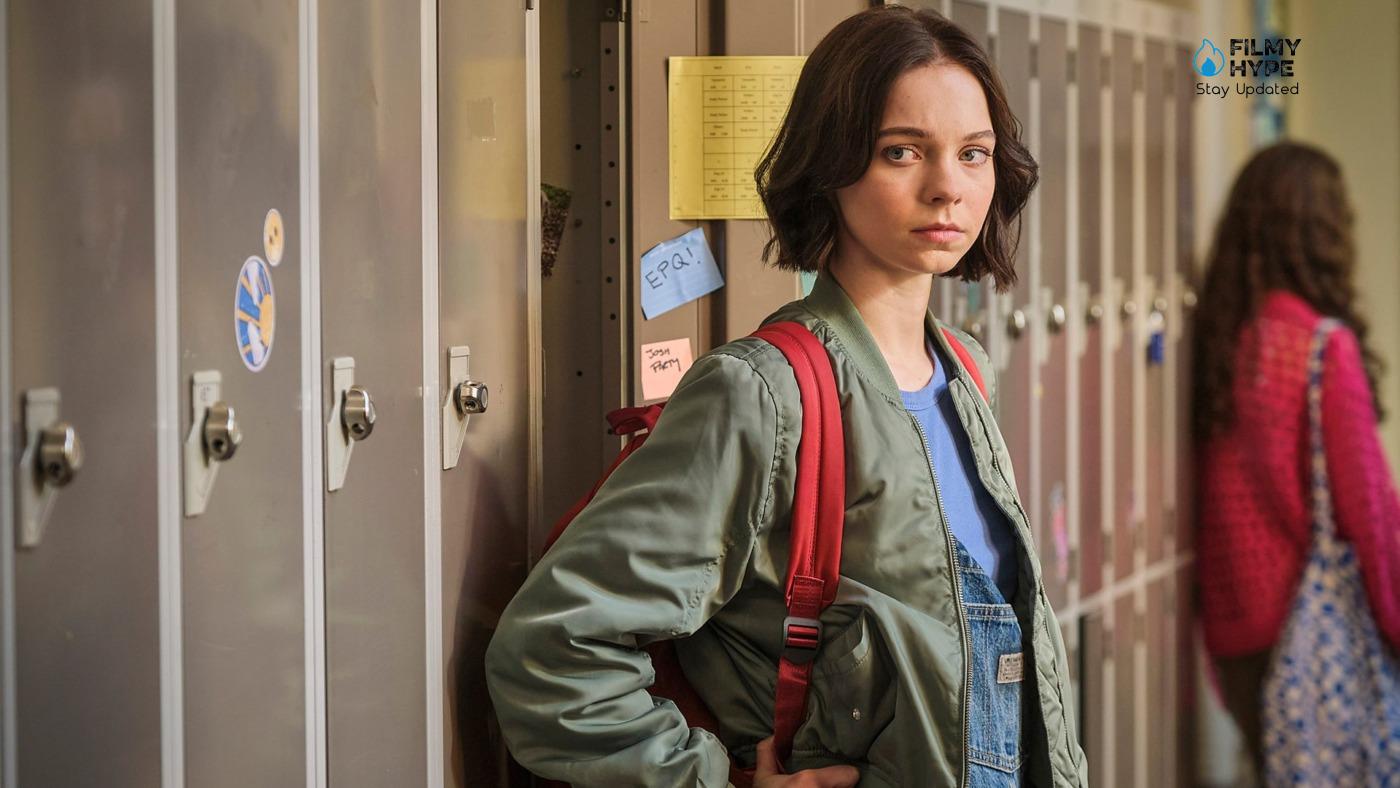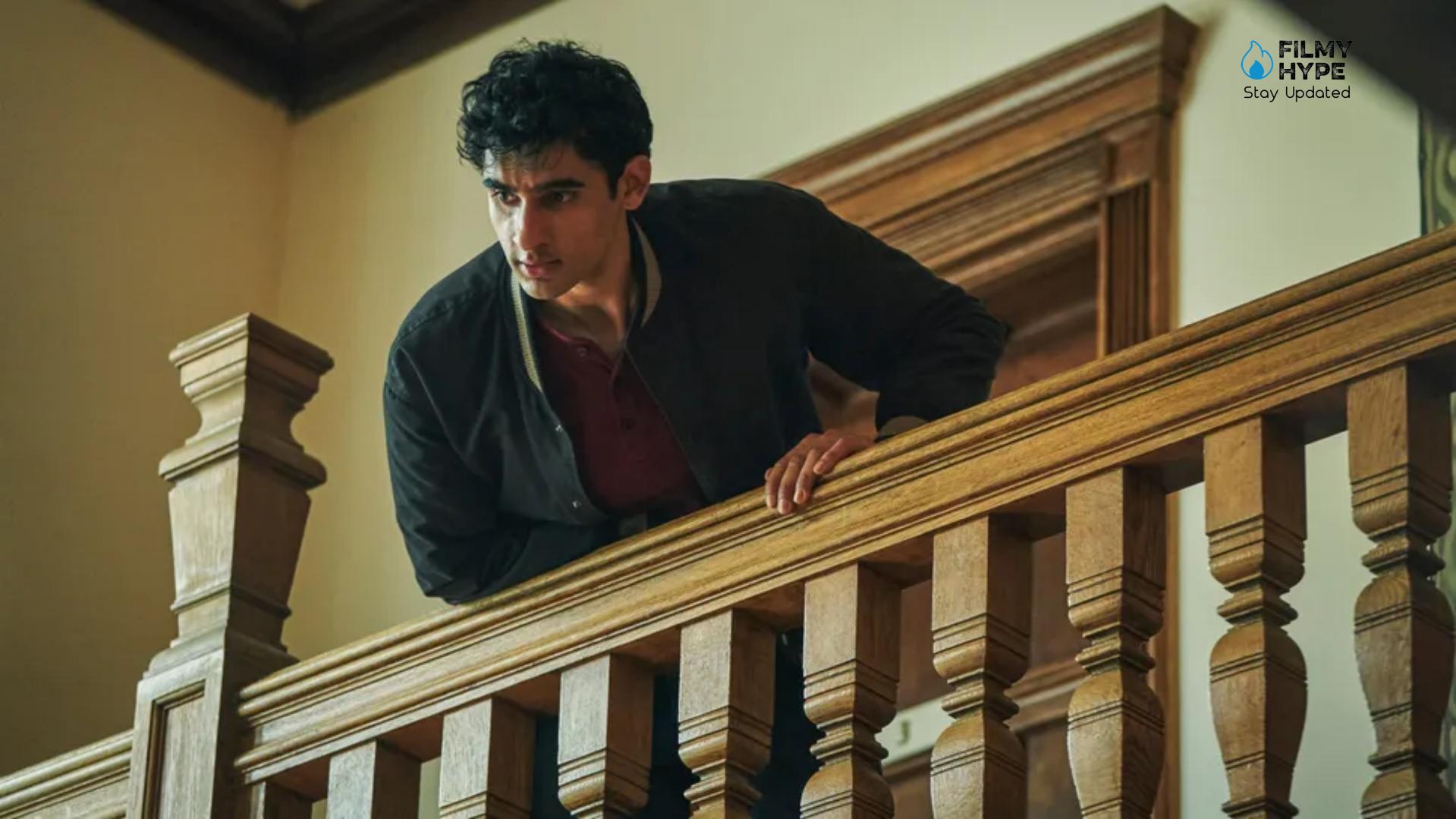A Good Girl’s Guide to Murder Review: Constant Twists and Turns and a Gripping Direction!
Cast: Emma Myers, Zain Iqbal, Asha Banks, Raiko Gohara, Jude Morgan-Collie, Yali Topol Margalith, Yasmin Al-Khudhairi, Henry Ashton, Carla Woodcock, Mathew Baynton, Gary Beadle, Anna Maxwell Martin
Created By: Poppy Cogan
Streaming Platform: Netflix
Filmyhype.com Ratings: 3.5/5 (three and a half stars)
Based on the 2019 bestseller of the same name by Holly Jackson, A Good Girl’s Guide to Murder is one of the new additions to the Netflix catalog that promises to immediately enter the top 10 of the most viewed products on the platform. At the center of the story is Pip Fitz-Amobi – played by Emma Myers, who many will already know for the role of Enid, the rookie werewolf in the TV series created by Tim Burton Wednesday, a teenager with the soul of a detective who embarks on an investigation to discover the truth behind the death of Andie Bell, which occurred five years earlier. The series, consisting of 6 episodes of about 45 minutes each, brilliantly combines mystery, drama, and thriller, keeping viewers in suspense until the last episode. Thanks to its continuous twists and gripping direction, A Good Girl’s Guide to Murder manages to keep the tension high, even if, at times, some dialogues and situations can seem a bit forced, slightly compromising the authenticity of the narration.

Appeared on the shelves of bookstores in 2019, A Good Girl’s Guide to Murder immediately became a publishing phenomenon thanks to word of mouth among young people who constantly talked about it on social media and forums, transforming the first book of the saga into a real best seller. The very young British writer Holly Jackson, born in 1992, thus continued with the writing of the story of Pip and Ravi with two other novels: “Good Girls, Bad Blood” and “A Good Girl is a Dead Girl” and a prequel novel “Kill Joy” set before the events of the first novel. The BBC series covers the narrative arc of the first novel and differs little from the events narrated in the book, adapting however a writing that perhaps penalizes what was so popular in the novel: the investigative part.
A Good Girl’s Guide to Murder Review: The Story Plot
In 2019, in a small town in the English hinterland, where everyone or almost everyone knows each other, Andie Bell, a teenager older than the protagonist of this story, mysteriously disappears: the body is never found but her boyfriend confesses to her murder and then commits suicide. At that point, the family becomes a pariah, and everyone tries to forget the terrible event. Five years later, Pip (Emma Myers, the little wolf Enid from Wednesday on whom the platform is certainly banking for the success of the show) does not feel satisfied with that resolution and decides to use an EPQ – a project that is being prepared in England and Wales to get into some colleges – as a pretext to personally start new investigations that shed light on that case. Obviously in the town, especially about the families involved, no one wants to bring up the past and the pain it has caused so many, and therefore no one is willing to talk to Pip. But she, determined and stubborn, will stop at nothing to find the truth, even to her own detriment.
A Good Girl’s Guide to Murder Review and Analysis
One of the most fascinating aspects of A Good Girl’s Guide to Murder is certainly the evolutionary path of the protagonist, Pip Fitz-Amobi. Although the focus of the narrative is the investigation into the disappearance of Andie Bell, the real beating heart of the series is Pip’s personal growth. Initially, Pip is a shy and introverted girl, almost invisible to her peers, who still seems like a twelve-year-old despite being about to graduate. Her quest to solve the mystery of Andie forces her to confront situations of great danger, which catapult her into a complex and adult world. The convincing performance of Emma Myers, already known for the role of the young werewolf on Wednesday, perfectly captures this condition: the actress embodies a mix of contrasting emotions, from fear to determination, from embarrassment to courage. Her Pip is a girl who blooms late, is excluded from her friends’ romantic conversations, and is often unaware of the threats that surround her.

The narrative also uses the metaphorical journey of personal growth, typical of coming-of-age stories, innovatively: each new clue and each danger faced by the protagonist represent her stages of a journey that is not geographical, but internal. This journey makes her mature, not so much through the loss of innocence, but through navigating the unknown, and discovering her interests and limits. The series thus masterfully balances the investigative thriller with a coming-of-age story, making A Good Girl’s Guide to Murder a gripping but also deeply emotional experience. Although A Good Girl’s Guide to Murder is full of suspense and twists, with cliffhangers strategically placed at the end of each episode to keep viewers glued to the screen, this mechanism sometimes feels a bit forced. Events often unrealistically follow one another, with a progression that does not always guarantee a perfect conjunction of cause and effect. Furthermore, the series sometimes seems to want to indulge in situations that, while engaging, are not very credible; some dialogues, in particular, can seem artfully constructed to elicit specific reactions rather than arising naturally from the characters and their circumstances.
In any case, A Good Girl’s Guide to Murder is a fresh and fun series, designed especially for a young audience (there are, in fact, no explicit or violent scenes), capable of offering a type of entertainment that allows you to easily overlook some of its narrative limitations. Watching A Good Girl’s Guide to Murder; after reading the novels, you have the feeling that something in the adaptation phase did not work. One of the strengths of the book is precisely the investigative/interactive aspect, Pip, reopening the case of the murder/suicide of Andie and Sal, begins his investigation by interviewing the inhabitants of the town and reporting in detail with notes, audio, post-its, all the information he manages to obtain, creating a real account that in the novels is reported as if they were pages of notes, images, drawings, a characteristic that is almost completely absent in the series. What happens in the staging is unfortunately a too-sharp cut of situations and investigations that lead to the “resolution” of the case, as if everything happens in an extremely automatic way, without a real explanation.
Although it is a young-adult story, A Good Girl’s Guide to Murder is a coming-of-age story full of messages and well-constructed and multifaceted characters – who will find greater depth and growth in the sequels – that uses the thriller to showcase some of the gray aspects of being a teenager. Unfortunately, the series cuts out a whole part of the fundamental psychological insights present in the novel, to give space to the action itself, even though this is sometimes too automatic and without a real explanation. Being an investigative story, what you would expect is the investigation, but this is precisely what is missing, preferring automatisms that make you empathize little with the characters. In addition to the young-adult background, the series showcases the corrupt world of adults, who are usually always absent in stories aimed at this target, it’s a shame that once again the series forgets this aspect, such as the deepening of Pip and Ravi’s circle of friends, used mostly as extras and not as key points of the story.

If there is one thing that the series has managed to capture almost perfectly, it is the casting choice. The characters seem – physically – to have come out of the pages of Jackson’s novels, all extremely focused and recognizable at first glance. The same cannot be said for the performances, often too low-key, almost overdone. If there was a fundamental characteristic of Pip’s behavior, it was precisely his being brilliant, always active and shrewd. Emma Myers, perhaps due to a script that was too poor, finds herself playing a constantly bored, almost sad Pip, far from the original of the novels. In short, a missed opportunity in several respects, perhaps due to a budget that was too low and the unwillingness to dare too much in a series aimed at a very young audience, despite the starting material being quite challenging.
A Good Girl’s Guide to Murder based on the first novel of the best-selling trilogy by Holly Jackson of the same title is a faithful adaptation but with several questionable aspects. Unfortunately, although the original story has not been affected, what is missing is the drive that characterized the novels. A young-adult thriller story where, perhaps for fear of daring too much, they opted for a more sweetened version of the facts leaving out much of the action and inventiveness that characterized the original characters. A missed opportunity despite the excellent choice of casting, unfortunately not always focused. It is impossible not to make comparisons with the teen detective drama (but calling it that is reductive, we know it well), even if physiologically unequal, if only for the depth of writing and characterization of the characters, who here remain much more on the surface and simply serve to carry out their task of pieces of the yellow puzzle that viewers can have fun putting together while trying to tell the backstory and dynamics.
Emma Myers is an excellent protagonist who keeps the series going but at the same time she is not charismatic enough and, above all, involved: what moves her is always something personal like Veronica, but with much less emotional transport than she would have us believe. The same happens for the developments full of twists and cliffhangers at the end of the episode designed for binge-watching by a young target: everything is very mechanical and consequential, and the events follow one another even in a slightly unrealistic way and not always with a perfect conjunction of cause and effect. The small-town protagonist of A Good Girl’s Guide to Murder, just like Twin Peaks before it, uses the pretext of the disappearance/death of the girl next door, a beauty queen loved by everyone, to show the rot that lies behind those doors and windows: winking a little also at Broadchurch, thanks to the English setting, the show shows how many secrets a single town can contain and how good girls are perhaps not actually such, as the title suggests.

Often “still water ruins bridges” as the famous proverb says and Andie Bell could embody this prototype. Unlike other series, in this case, it is not so much about social inequality or sexual liberation, but about discrimination and love, at different ages. It shows what we are not always ready and willing to see in order not to want to look into the abyss of humanity, of our neighbors and trusted friends, especially those from the provinces. A Good Girl’s Guide to Murder is a good entertaining teen mystery series, but it stops at a certain coldness and mechanicalness of the story, making us passionate only up to a certain point about Pip’s story, about his bond with the missing girl and the boy accused of her murder. As well as his friends and his family, about all those who gravitate around him and who form the colorful inhabitants of a small town ready to show its worst and darkest side, made of revelations that have been dormant for too long and are ready to explode. What is real human nature?
A Good Girl’s Guide to Murder Review: The Last Words
Thanks to its constant twists and turns and gripping direction, A Good Girl’s Guide to Murder manages to keep the tension high, even if, at times, some dialogues and situations can appear a little forced, slightly compromising the authenticity of the narration. A Good Girl’s Guide to Murder based on the first novel of the best-selling trilogy by Holly Jackson of the same title is a faithful adaptation but with several questionable aspects. Unfortunately, although the original story has not been affected, what is missing is the drive that characterized the novels. A young-adult thriller story where, perhaps for fear of daring too much, they opted for a more sweetened version of the facts leaving out much of the action and inventiveness that characterized the original characters. A missed opportunity despite the excellent choice of casting, unfortunately not always focused.


